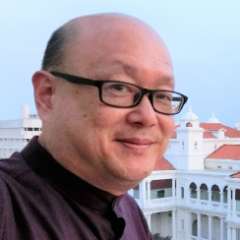The third concert of the Singapore Symphony Orchestra’s Mozart mini-cycle was held at the Esplanade Concert Hall, seating 1630, in order to accomodate the expansive aural canvas that was Anton Bruckner’s Fourth Symphony. Directed by Danish conductor Thomas Dausgaard, the concert had a shorter chamber-sized first half, followed by the monumental “Romantic” Symphony of the second half.
Chinese pianist Haochen Zhang, joint first prize-winner of the 2009 Van Cliburn International Piano Competition, did the honours in Mozart’s Piano Concerto no. 24 in C minor. Only the second piano concerto (out of 27) cast in a minor key, the pathos spelled out in the opening orchestral tutti was palpable but unforced, as was Zhang’s simple entry. Soon he blended so seamlessly with the orchestra that this became a perfect thesis of chamber music. It was only in the first movement cadenza, with the soloist left to stand on his own, that a display of harmonic twists and turns ensued. This audacious but interesting cadenza was an original one by the pianist himself. While most opt for Beethoven’s cadenza, Zhang’s show of individuality was surely a lost art being headily revived.
Following that, the slow movement’s Romanza was a thing of rare beauty, made even more special by the orchestra’s excellent woodwind contributions. The gloves came off for the finale’s Theme and Variations. Here Zhang strived for greater sound and effect, with a muscular showing as if making up for earlier emotions kept in check. This young man is a thinking musician, an artist of myriad and variegated nuances. His totally musical encore was further proof: an elegant reading of Brahms’ Intermezzo in A major.
The pastoral theme laid out in two previous concerts continued with Bruckner’s Fourth Symphony, surely the most performed of his symphonies. Bruckner is still a relative stranger in Singapore, his star being totally eclipsed by younger compatriot Gustav Mahler, whose symphonies are regularly surveyed here by SSO and even youth orchestras. Thus it was a pleasure to encounter a rare performance, one that spoke clearly and without neuroses or hysterics. The version performed was the one from 1878-1880, edited by Leopold Nowak.
Principal horn Han Chang Chou bore the full weight of the opening solo call squarely on his shoulders and he did not disappoint. His French horn section was also able to distinguish itself in bracing climaxes all through the symphony’s four movements, as did the rest of the brass. Their moments provided the icing on a well-baked cake that stood steadfastly under Dausgaard’s leadership. This was not a performance of stolid and monolithic rigidity, as Bruckner symphonies often congeal into, but rather like a supple and breathing organism. Its evocation of nature (hence the pastoral connection) and overcoming of elemental forces were overriding themes that spanned the symphony’s 64 minutes or so.
While the first movement scaled lofty peaks, the second movement’s was its earthy counterpart, the funeral march sounding not so much sombre or lugubrious but reflective. Its aesthetics looked back to late Schubert and ahead to Mahler. Building to a climax, if there were a truly sublime moment, that was provided by Han’s solo again. The hunting horns of the third movement Scherzo were a delight, their homespun rusticity suggesting that Bruckner’s designation of the nickname “Romantic” to this symphony was not misplaced.
The mighty finale was taken at a steady pace, with the big statement theme arriving with a roaring finality that was inevitable. Through a journey of tumultuous upheavals, with each peak and valley encountered and adroitly negotiated, this was a flowing reading that grew with stature until its final cadence. For newcomers to Bruckner’s symphonies, this would be just the perfect primer.


